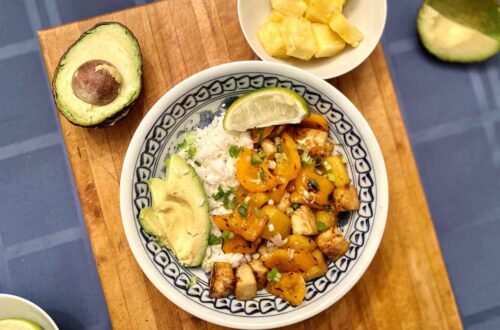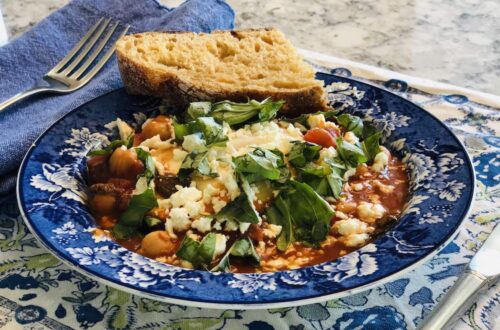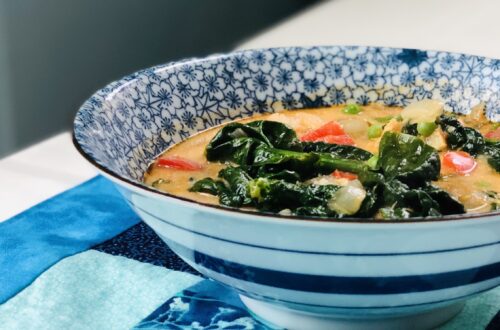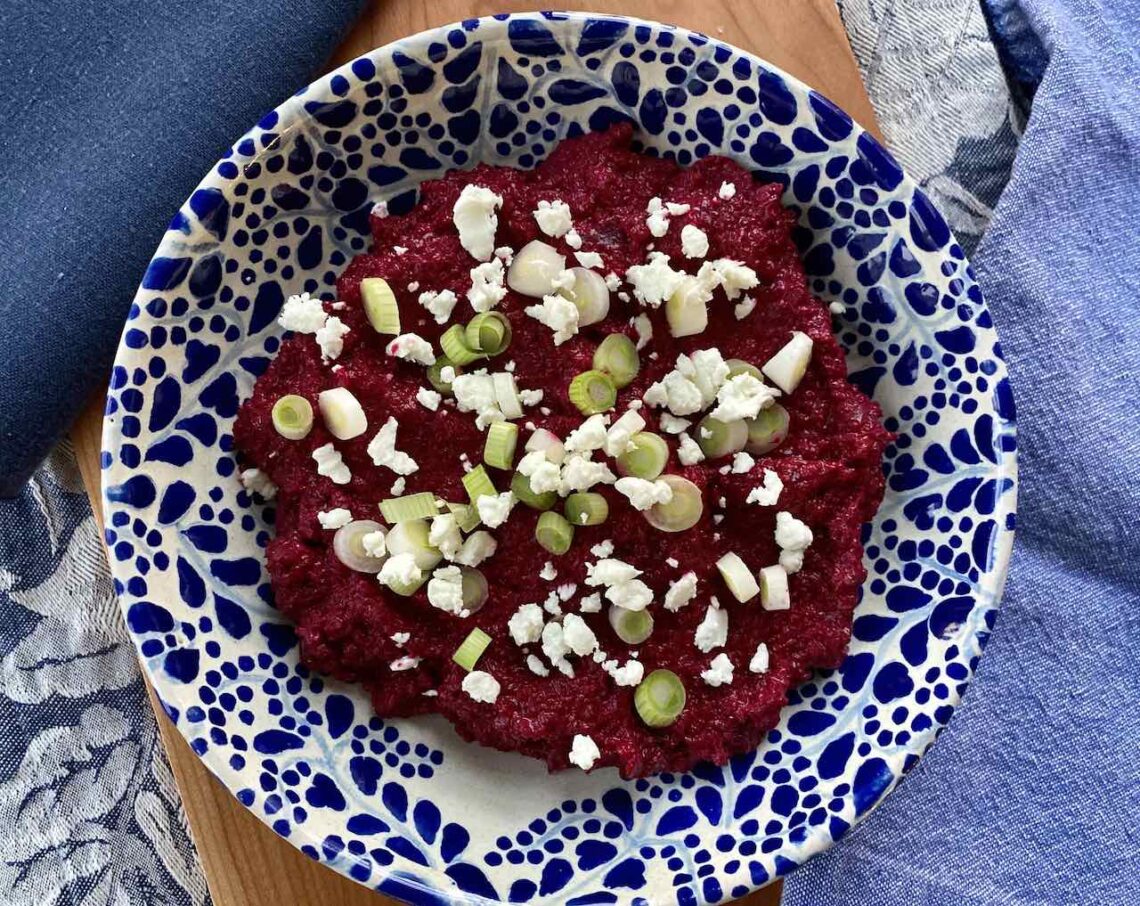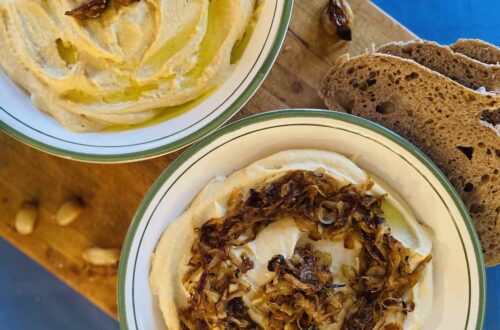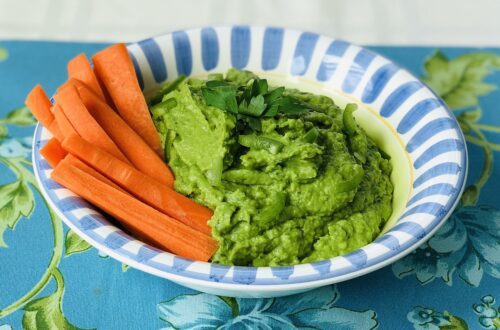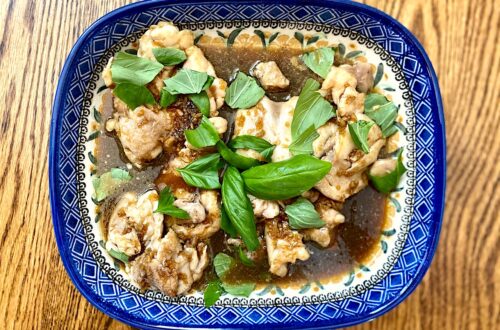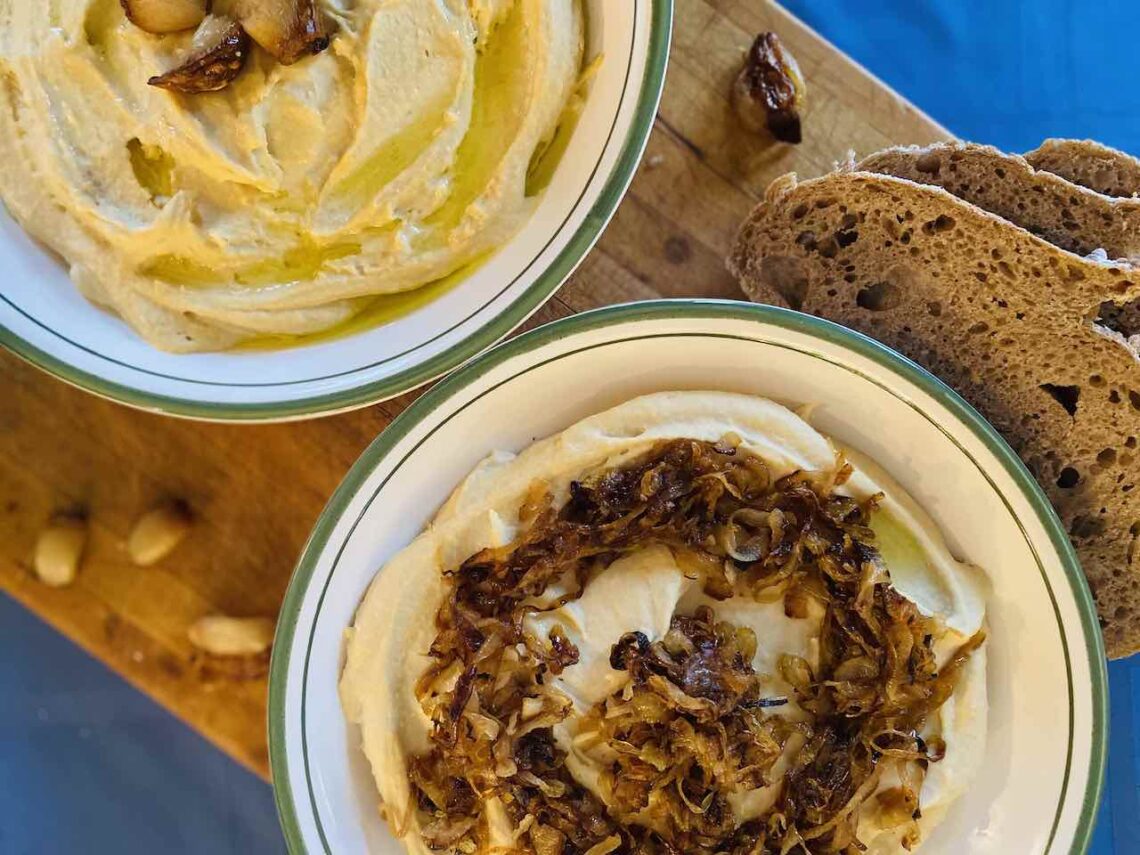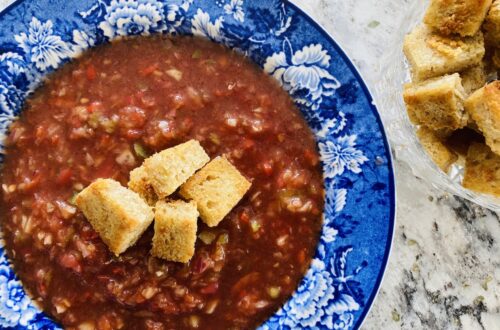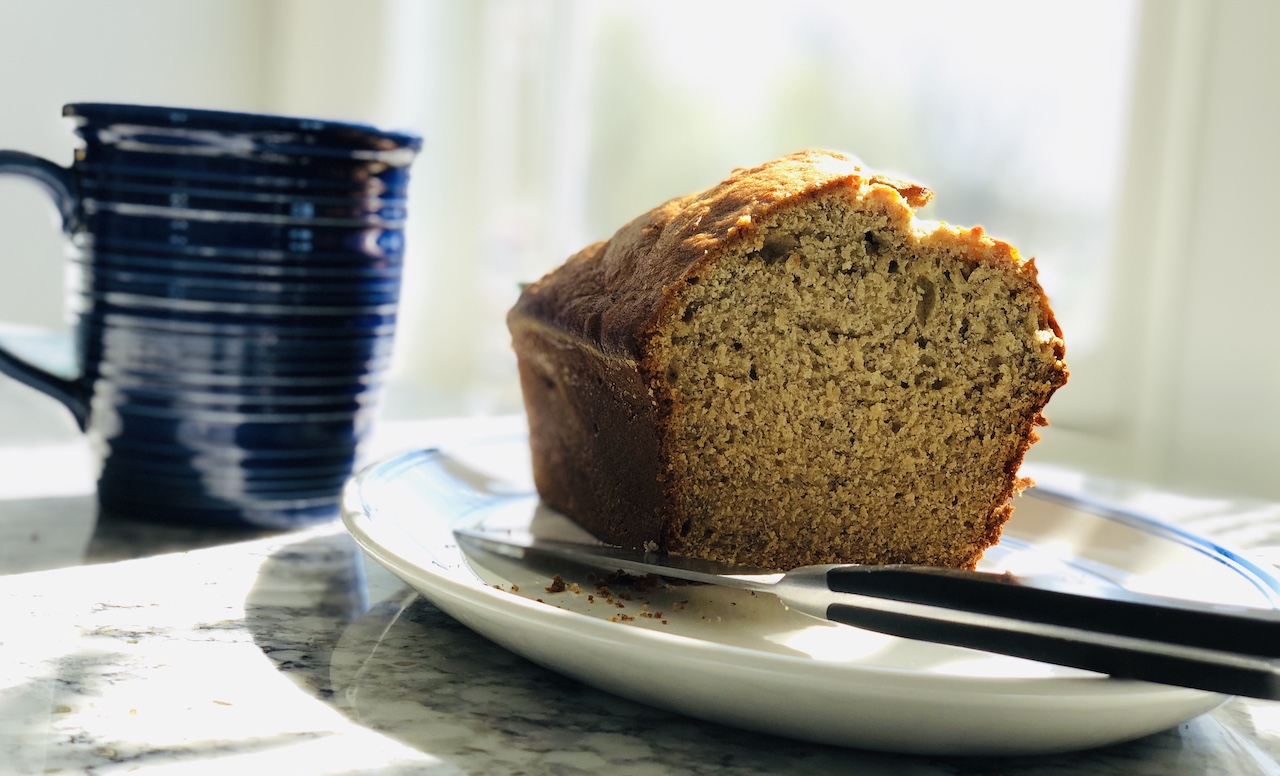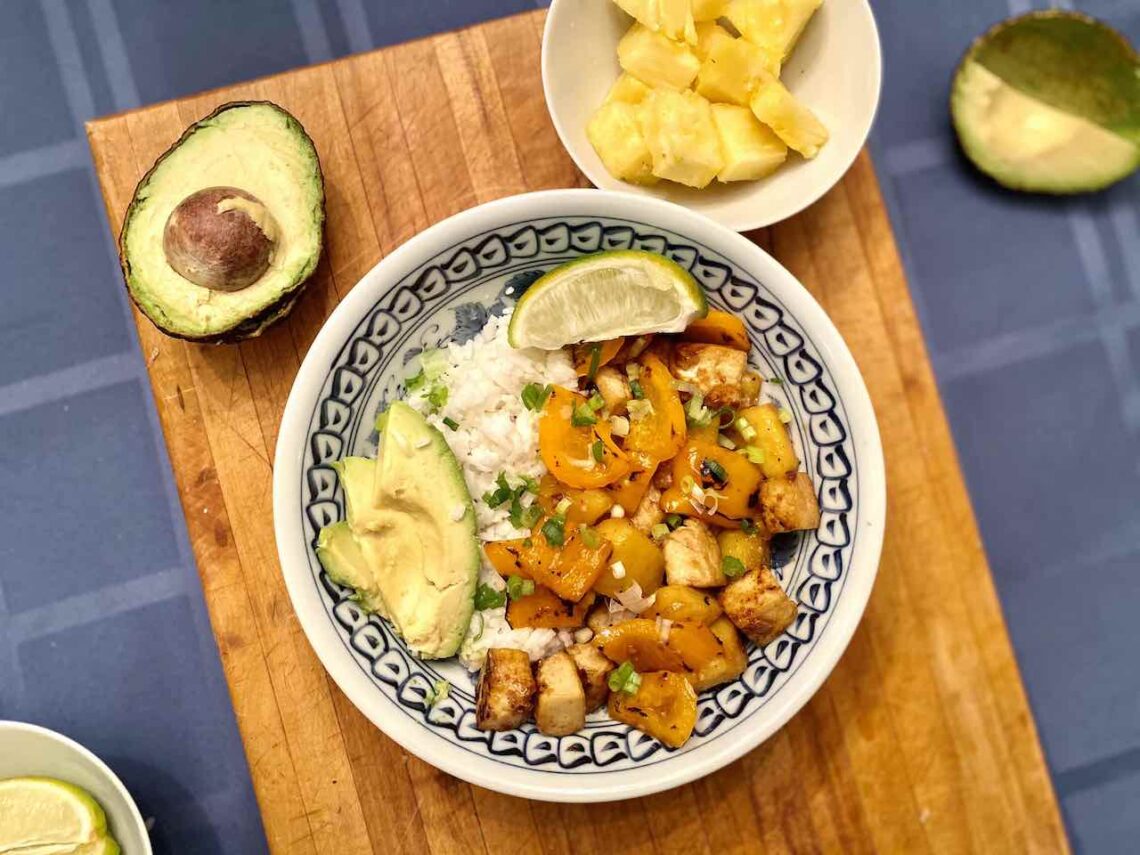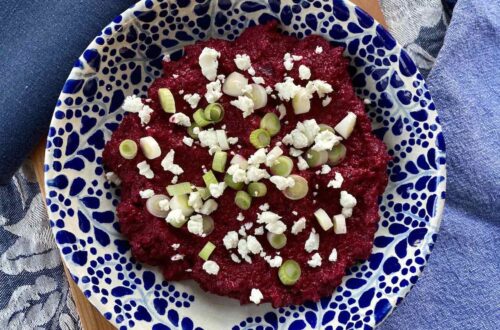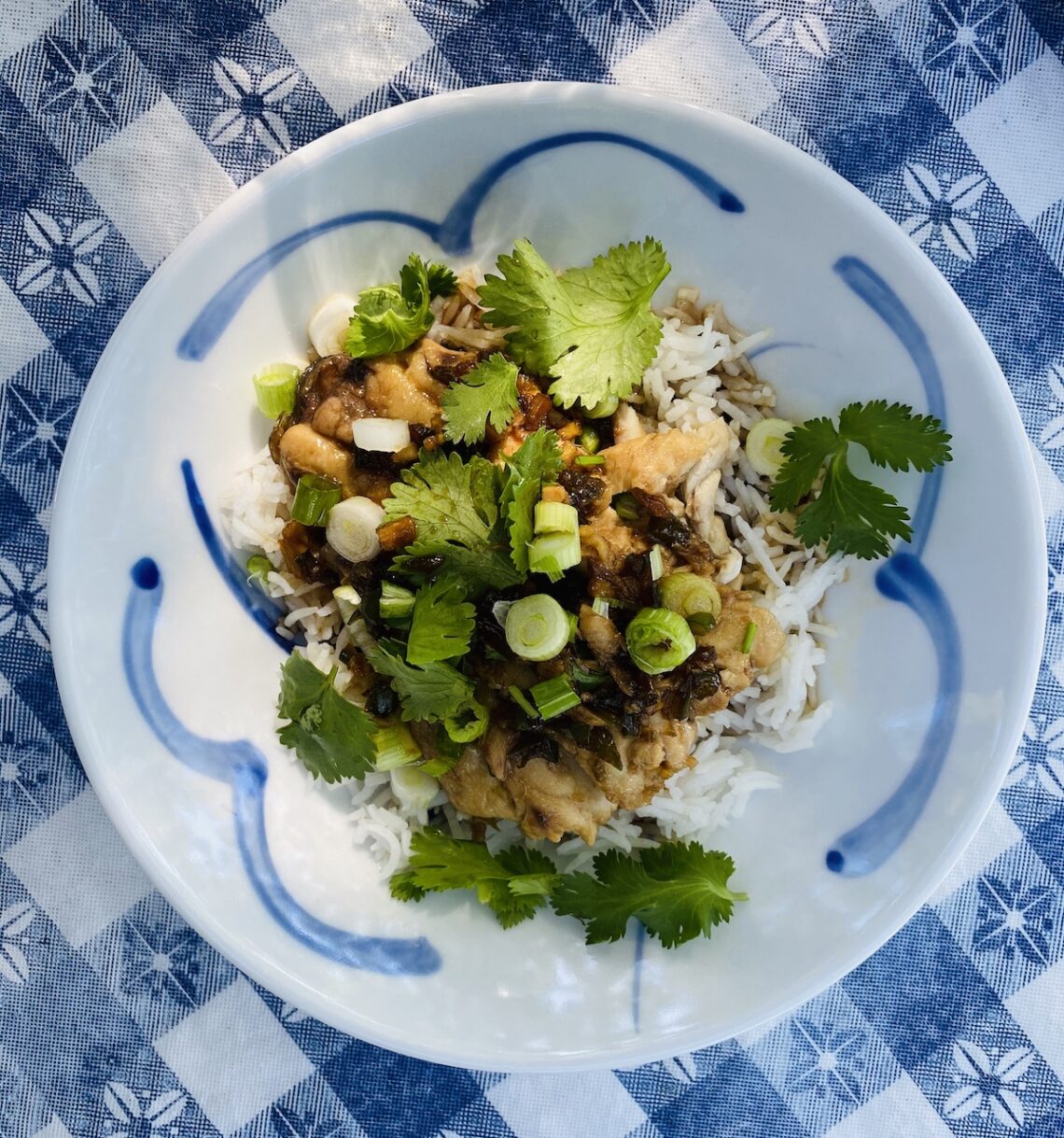-
Sweet Potatoes, Lentils, and Spinach Red Curry
All of a sudden, summer has arrived in Chicago, along with a sense that we are returning to some semblance of normalcy. Instead of walking dates, there are dinners inside and out as we reunite with people we haven’t seen since before the pandemic began. There is a part of me that can’t believe this can resume: being unmasked inside when everyone is fully vaccinated, returning to travel, going out to dinner again.
While Covid has shown just how unpredictable the future can be, the need to cook meals each week remains constant. In the last couple of weeks I’ve been going into the office again, which means I need to make lunches in advance. This sweet potato curry is a go-to recipe for lunch – it travels well, heats up easily, and makes a filling meal. While this is really more of a winter stew (I intended to post it back in February, when it was still dark and cold outside…whoops), it’s good enough to eat at any time of year.
-
Puréed Beet Dip
There are some cookbooks that suck you in, instantly inspiring you to make every single recipe in the book. Jerusalem, by Yotam Ottolenghi and Sami Tamimi, is one of these. (I’m certainly not the first person to feel this way.) Recipes for butternut squash with tahini spread, chicken with caramelized onion and cardamom rice, and khachapuri called my name. But it was the recipe for puréed beets with yogurt and za’atar that really caught my eye. I love beets. I’ve always found pickled beets in a salad to be a delightful surprise, and roasted beets are sweeter and deeper. Since I found this recipe, I’ve made this dip at least five times. Every time it disappears within a day or two.
I know that beets can be a bit scary to cook with. Yes, they bleed and can get on everything (your shirt, the table, the chair, the counter, your sweater). And yes, roasting them takes a while. But really, you just throw the beets into a pot (preferably a Dutch oven, but any pot with a lid or aluminum foil will do), add some olive oil, and let them do their thing. You may want to turn them once or twice, but that’s it. (And if that still sounds too hard, just use canned beets.) The rest of the recipe is a breeze – add everything to a food processor and let it whirl!
-
Dorie’s Sweet Chili Chicken Thighs
In 1946, the United States Department of Agriculture launched the “Chicken of Tomorrow” contest. The goal of the contest was to produce “one bird chunky enough for the whole family—a chicken with breast meat so thick you can carve it into steaks, with drumsticks that contain a minimum of bone buried in layers of juicy dark meat, all costing less instead of more.” Contestants had a year to breed and submit a chicken that fit this description.
This contest, thought up by the head of the largest supermarket chain of the time, the A&P, changed the trajectory of American chicken farming. Before the 1940s, chickens were often quite small and scrawny, with little meat on them. The fact that they laid eggs meant that chickens were often worth more alive than on the dining room table. Only when chickens were no longer able to lay eggs would a family eat them – and even then it was usually for a special occasion.
-
Hummus Two Ways
As 2020 comes to an end, I want to close out the year on an upbeat note. It’s been a difficult time for so many, and we are all eager to start the new year – one in which vaccines will be rolled out, the terrible orange man will no longer be in charge of the United States, and we can all (eventually) gather with friends and family once again. While this New Year’s will be unlike any other, I think we all owe it to ourselves to celebrate the hell out of the end of 2020.
This recipe – for hummus topped with caramelized onions and roasted garlic – is part of my New Year’s plan, which includes other fun finger foods: stuffed mushrooms, bacon-wrapped dates, and cheese and prosciutto. This recipe is for the famous hummus from the cookbook Jerusalem, by Yotam Ottolenghi and Sami Tamimi, the Israeli-Palestinian duo that have made ingredients like tahini mainstream for American and European cooks. This hummus is superb, less like the packaged hummus from a grocery store and more like the hummus from my favorite hummus restaurant in Berlin (Azzam, I hope you are still around when I get back to Germany) or the hummus you find in Palestine. Plus, for those of you who already make fresh hummus and follow recipes that involve carefully peeling the skin off of each chickpea, this recipe eliminates that hassle.
-
Hazelnut-Raspberry Macaroons
When I lived in Germany, I learned one very important thing: Christmas is a really big deal. Christmas markets spot the city, advent wreaths with candles sit on dining room tables, and the whole country shuts down for two and a half days at Christmas. Plus, there are Christmas cookies. I had always thought that Christmas cookies were those sad little sugar cookies that you decorate with colored frosting that no one enjoys eating. But the variety of cookies for a German Christmas was so much more interesting and exciting.
These hazelnut-raspberry macaroons come from one of my favorite cookbooks, Luisa Weiss’s Classic German Baking, one of the few cookbooks to make German baking accessible to an American audience (and pantry). This cookie is a new favorite – it’s light and fluffy, with a good mix of tart from the jam and sweet from the cookie.
-
Rugelach
In honor of Hanukkah, I made rugelach this week. Having never eaten homemade rugelach, I only had memories of dry, crumbly cookies. But the pandemic has instilled in me a desire to hold on to traditions – even ones I’ve never followed before. These small, crescent-shaped cookies are perfect for cold December evenings. They are flaky, crunchy, and just the right amount of sweet. (I gave some to a 90-year-old friend, Polly, who said they “tasted like Hanukkah.”)
Enough about rugelach – and on to this week’s ingredient: sugar. Sugar comes from both sugarcane and sugar beet. Unfortunately, both supply chains are rife with environmental and labor abuses, including forced and child labor. According to the US Department of Labor, sugarcane and sugar beet are both produced with forced and/or child labor in at least 20 countries across Asia, Africa, and Central and South America.
-
Sweet and Sour Tofu and Pineapple
One evening a couple of years ago, I trudged through the snowy and muddy New England streets and arrived at my friend’s house for dinner, where she welcomed me with a dish that tasted like summer. The day had felt interminable, but then this wonderful friend was there with love, laughter, and a delicious dinner. As someone who at the time lived mainly on meatballs, Bolognese sauce, and a lot of eggs (fried, soft-boiled, scrambled, in ramen, on top of tortillas, on top of more tortillas), this fresh tofu dish was the best gift I could have asked for.
As the days get darker and colder and social distancing continues unabated, we all need a way to pretend that it’s summer, even if just for a few minutes. That’s what this dish does. It combines crispy tofu with pineapple and a sweet and sour sauce that is both cozy and reminiscent of warmer times of year. This dish has recently become a staple in my family and has convinced certain people to eat – and even enjoy – tofu.
-
Red Lentil and Split Pea Soup
Back over the summer, I had big plans for posting about Thanksgiving foods. Thanksgiving is one of my favorite holidays, and I was going to embrace it like never before. I was planning to ask a friend for her recipe for bourbon-chocolate-pecan pie, post my favorite stuffing recipe (with hot Italian sausage and maple syrup), and look into the supply chain of cranberries. Unfortunately, none of that happened. (Things like work, Covid-19, and the election got in the way.) But I’m back, planning to post more regularly again, and wanted to restart with a warm soup for the cold December evenings.
I don’t know when I first made this soup, but it puts all other lentil soups to shame. I once made it for my friend Drew, who liked it so much that years later he still mentions it when we talk. (He also went out and bought lentils to make the soup – pounds and pounds of lentils. Two years later the remains of these lentils had started to sprout…but we made the soup and it tasted just fine with sprouted lentils.) What I’m trying to say is that if you are looking for a cozy pandemic soup, this is it.
-
Levain Chocolate-Chip Walnut Cookies
Today’s topic is cocoa. Full disclosure: I spend a lot of my real working life working on issues related to child labor in the cocoa industry, which made it was really hard to keep this post short. (Sorry!) For weeks I’ve been searching for the right recipe for chocolate – something a little different, but not too difficult. Luckily, last week a friend raved to me about Levain cookies. Levain cookies come from New York City’s Levain Bakery, which apparently is very well-known. As a true Midwesterner, I had never heard of the bakery or the cookies, but was fascinated by the idea of a chocolate chip cookie the size of a small cake. I have no idea if these cookies actually taste like the ones at Levain Bakery, but I do know that they are incredible – and really intense. After giving away one, I pretty quickly received a text message: “Oh my God, that cookie is amazing.” They truly are. These cookies should be just cooked, golden brown on top and still gooey in the middle.
But enough about the cookie. Let’s focus on the cocoa industry, which like many commodities, has a largely hidden supply chain and a number of human rights issues. Cocoa beans are found in cocoa pods, which grow on trees. These cocoa trees can only grow in certain latitudes – between 20 degrees north and 20 degrees south of the equator. Much of the world’s cocoa – at least 60 percent – is produced in Cote d’Ivoire and Ghana. This includes most “bulk” cocoa that goes into candy, chocolate chips, Nutella, and most of what you probably buy. Unfortunately, the West African cocoa industry has numerous problems, including low wages for farmers, high incidences of child labor and forced child labor, and it is a leading cause of deforestation in Cote d’Ivoire.
-
Vietnamese-Inspired Caramel Bluefish
This year, as the weather gets chillier, it’s more difficult than usual to welcome the fall. This fall doesn’t feel like a new start, as the fall often does, but instead feels like the beginning of a more difficult period of the pandemic, when gathering outside becomes less and less of an option. And so, even though it’s almost October, I’m posting a recipe about bluefish, a fish that conjures up images of summer and grilling and allows me to hold on to summer for one more moment.
There are so many ways to cook bluefish. You can marinate it and grill it. (A marinade of olive oil, balsamic vinegar, honey, and mustard, plus salt and pepper, is easy and delicious.) You can wrap it in aluminum foil and either cook it over the grill or in the oven, and then enjoy the soft and flaky meat, which turns almost white. You can eat smoked bluefish on crackers or as a pate. The world of bluefish is large and should be cherished. This recipe, from Melissa Clark, is cooked on the stove. It’s simple and can be made on a rainy day when you don’t want to go outside to grill. You just add everything to a pan, cook the fish in the sauce, and serve it. (You can also use other fish like salmon and mackerel for this dish.)

